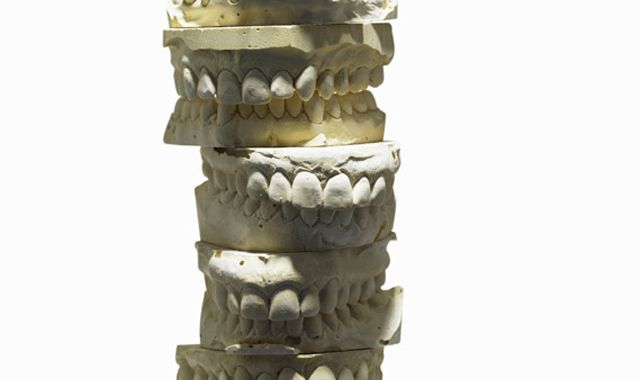Study finds accuracy of impression techniques may be affected by partial vs. complete edentulism
A recent study out of Tufts University found that the accuracy of impression techniques can be affected by partial vs. complete edentulism. The study evaluated the differing levels of success of conventional and digital impression techniques in partially and completely edentulous patients. It also assessed the effect different variables, such as materials, angulation, and connection type, had in regard to the accuracy of implant impressions.

A recent study out of Tufts University found that the accuracy of impression techniques can be affected by partial vs. complete edentulism. The study evaluated the differing levels of success of conventional and digital impression techniques in partially and completely edentulous patients. It also assessed the effect different variables, such as materials, angulation, and connection type, had in regard to the accuracy of implant impressions.
An accurate implant impression is necessary to generate an accurate cast, though there are various clinical and laboratory variables that can affect the accuracy of an implant cast. One of the most significant factors is the impression procedure. Although various implant impression techniques have been used to generate casts, there has yet to be evidence regarding which technique is the most accurate. Previous studies on accuracy didn’t account for partially vs. completely edentulous patients, whereas this study differentiated between the two.
On-demand webinar: Learn how to prescribe highly esthetic partial and complete dentures
The study's author, Dr. Panos Papaspyridakos, found that a splinted technique was more accurate than nonsplinted for both partially and completely edentulous patients, while the open-tray technique was more accurate than closed-tray for completely edentulous patients. Impression materials did not affect the accuracy of implant impressions.
In conclusion, the study determined that the accuracy and success of any given implant impression technique differs between partial and completely endentulous patients.
The full study was published in the July/August issue of The International Journal of Oral and Maxillofacial Implants (JOMI), the official journal of the Academy of Osseointegration (AO). Information for this article was provided by JOMI.
For a complete copy of the study, visit: http://www.osseo.org/NEWIJOMI.html.
Oral Health Pavilion at HLTH 2024 Highlighted Links Between Dental and General Health
November 4th 2024At HLTH 2024, CareQuest, Colgate-Palmolive, Henry Schein, and PDS Health launched an Oral Health Pavilion to showcase how integrating oral and general health can improve patient outcomes and reduce costs.
Episode 31: Dentsply Sirona Implant Announcements
September 30th 2021DPR’s Editorial Director Noah Levine sat down with Gene Dorff, Dentsply Sirona’s group vice president of implants and Dr. Dan Butterman to review several big announcements the company made in the arena of implants during Dentsply Sirona World 2021 in Las Vegas.